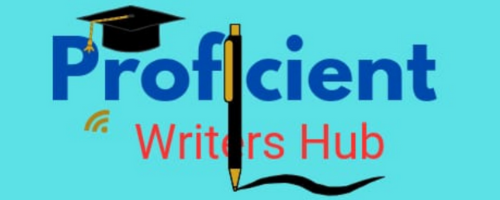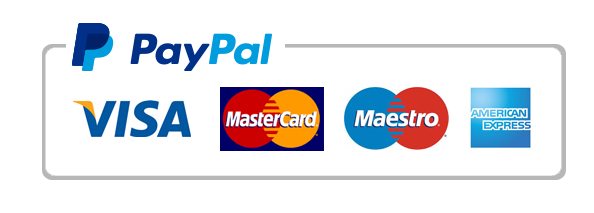Acupuncture in the USA: Benefits, Safety, and Everything You Need to Know
Acupuncture in the USA: Benefits, Safety, and Everything You Need to Know
Acupuncture has grown from an ancient practice rooted in Traditional Chinese Medicine (TCM) to a modern, evidence-backed therapy used in hospitals, wellness centers, and private clinics across the United States. From chronic pain relief to stress management, millions of Americans now turn to acupuncture each year as a safe, holistic alternative or complement to conventional medicine.
At Proficient Writers Hub, we break down health and wellness topics into practical, trustworthy knowledge. If you’ve ever wondered what acupuncture is, how it works, whether it’s safe, or how it’s practiced in the USA, this guide covers everything you need to know.

What Is Acupuncture?
Acupuncture is a therapeutic technique where thin, sterile needles are inserted into specific points on the body. According to TCM, these points lie along energy pathways called meridians, and stimulating them helps restore the flow of “qi” (life energy). From a Western medical perspective, acupuncture stimulates nerves, muscles, and connective tissues, triggering the release of natural painkillers like endorphins and improving circulation.
The History of Acupuncture
- Ancient Roots: Originating in China over 2,500 years ago, acupuncture is one of the oldest healing systems still in practice today.
- Introduction to the West: European travelers described acupuncture as early as the 17th century. The practice reached mainstream recognition in the United States during the 1970s.
- Modern Recognition: Organizations such as the World Health Organization (WHO) and the U.S. National Institutes of Health (NIH) now recognize acupuncture as a complementary therapy for several conditions.
How Does Acupuncture Work?
There are two primary frameworks:
- Traditional Chinese Medicine (TCM) View: Illness results when qi is blocked or unbalanced. Acupuncture restores harmony by stimulating meridians.
- Scientific View: Needling specific points stimulates sensory nerves, enhances blood flow, and activates the central nervous system to release healing chemicals.
Common Acupuncture Techniques
- Manual Needle Insertion: The most widely used form with fine needles gently placed at precise points.
- Electroacupuncture: Low electrical currents are applied to needles for enhanced stimulation.
- Moxibustion: The burning of dried mugwort near points to promote healing.
- Cupping Therapy: Suction cups used to boost blood flow, often paired with acupuncture.
- Auricular Acupuncture: Targeting points on the ear, commonly used for stress and addiction treatment.
Conditions Acupuncture May Help Treat
According to research and clinical evidence, acupuncture is often used for:
- Chronic pain (back, neck, arthritis, fibromyalgia)
- Migraines and tension headaches
- Anxiety, stress, and depression
- Insomnia and fatigue
- Nausea and vomiting (including chemotherapy side effects)
- Menstrual cramps and fertility support
- Digestive disorders (IBS, acid reflux)
- Post-operative and rehabilitation recovery
Benefits of Acupuncture
- Drug-Free Relief: Reduces reliance on medications, especially painkillers.
- Holistic Healing: Treats both physical symptoms and emotional well-being.
- Few Side Effects: Safe when performed by licensed practitioners.
- Versatile Use: Complements modern medicine in hospitals and wellness centers.
Risks and Safety Considerations
While generally safe, acupuncture can have risks if performed incorrectly:
- Minor bruising or bleeding at needle sites
- Temporary soreness or dizziness
- Infection (if unsterile needles are used)
Important: Always choose a licensed, certified acupuncturist. In the U.S., practitioners must meet state licensing requirements and use disposable, sterile needles.
Acupuncture in the USA: What You Should Know
In the United States, acupuncture is widely practiced, but regulations vary by state. Key points include:
- Licensing: Most states require acupuncturists to be licensed by the National Certification Commission for Acupuncture and Oriental Medicine (NCCAOM).
- Integration with Hospitals: Many U.S. hospitals now include acupuncture in integrative care programs for pain management and post-surgical recovery.
- Insurance Coverage: Some health insurance providers (including Medicare Advantage in certain cases) cover acupuncture for conditions such as chronic low back pain. Always check your plan details.
- Accessibility: Acupuncture clinics are available in most major cities across the U.S., from New York to Los Angeles.
What to Expect in a U.S. Acupuncture Session
- Consultation: The acupuncturist reviews your medical history and symptoms.
- Treatment Plan: Points are selected based on your condition.
- Needle Placement: Needles are inserted, typically painless or with mild sensation.
- Relaxation Period: You rest for 20–30 minutes while needles work.
- Follow-Up Sessions: Multiple visits may be recommended for best results.

Scientific Evidence on Acupuncture
- Strong Evidence: Effective for chronic pain, migraines, and osteoarthritis.
- Promising Research: Shows benefits for anxiety, depression, and insomnia.
- Mixed Findings: Evidence for fertility, allergies, and cancer care support is growing but not conclusive.
The NIH and WHO recognize acupuncture as beneficial for over 100 conditions, though effectiveness varies among individuals.
Chinese Traditional Medicine: Ancient Healing for Modern Wellness
For thousands of years, Chinese Traditional Medicine (TCM) has been practiced as a holistic approach to health and healing. Rooted in ancient Chinese philosophy, TCM combines herbal remedies, acupuncture, massage therapy, dietary balance, and mind-body practices like Tai Chi and Qigong. Today, people around the world—including the USA—turn to TCM not only for treatment but also for prevention, wellness, and stress relief.
This comprehensive guide explores the principles, history, key treatments, benefits, and modern relevance of TCM while offering insights into how it complements Western medicine.
The Philosophy Behind Chinese Traditional Medicine
At the core of TCM lies the idea of balance and harmony within the body and between humans and nature. Two main philosophical concepts drive this system:
- Yin and Yang
- Represents opposing yet interconnected forces (e.g., hot/cold, active/passive).
- Illness occurs when Yin and Yang are out of balance.
- Treatments aim to restore this equilibrium.
- Qi (Life Energy)
- Qi is considered the vital life force that flows through meridians (energy pathways).
- Blockages or imbalances in Qi lead to sickness or discomfort.
- Acupuncture, herbal medicine, and Qigong are designed to regulate Qi.
Major Practices in Chinese Traditional Medicine
1. Acupuncture
One of the most recognized forms of TCM in the USA, acupuncture involves inserting thin needles into specific points along meridians to restore energy flow.
- Benefits: Pain management, stress relief, improved digestion, enhanced immunity.
- Modern integration: Many U.S. hospitals now provide acupuncture as part of integrative health programs.
2. Herbal Medicine
Chinese herbal remedies use plant-based formulas, often combined for synergistic effects.
- Examples: Ginseng (energy booster), Goji berries (immune support), Ginger (digestion).
- Usage: Prescribed as teas, powders, capsules, or tinctures.
- Regulation: In the USA, many herbal products are classified as dietary supplements.
3. Tui Na (Chinese Therapeutic Massage)
This therapeutic massage technique targets pressure points, muscles, and joints to enhance circulation and relieve pain.
- Often compared to deep tissue massage, but rooted in Qi balance.
4. Dietary Therapy
Food is viewed as medicine. Chinese dietary therapy emphasizes eating according to seasons, body constitution, and balance of hot/cold foods.
- Example: Ginger tea in winter to warm the body; cucumber in summer to cool down.
5. Tai Chi and Qigong
These gentle, meditative exercises combine movement, breathing, and focus to cultivate internal energy.
- Benefits: Stress reduction, improved flexibility, better balance, mental clarity.
Chinese Herbal Pharmacology: A Closer Look
The Chinese materia medica includes thousands of herbs and formulas. Popular categories include:
- Tonics: Ginseng, Astragalus (boost energy, strengthen immunity).
- Digestive aids: Licorice root, Hawthorn berries.
- Anti-inflammatory herbs: Turmeric, Skullcap.
Herbs are carefully selected based on an individual’s diagnosis, body constitution, and presenting symptoms.
Benefits of Chinese Traditional Medicine
- Holistic Healing
- Addresses root causes rather than just symptoms.
- Considers emotional, mental, and physical health.
- Preventive Care
- Focuses on maintaining balance to prevent illness.
- Emphasizes lifestyle, diet, and stress management.
- Chronic Illness Support
- Provides relief for arthritis, migraines, digestive disorders, anxiety, and more.
- Natural and Complementary
- Offers natural remedies with fewer side effects compared to some pharmaceuticals.
- Often used alongside Western treatments for enhanced outcomes.
Chinese Traditional Medicine vs. Western Medicine
| Aspect | Chinese Traditional Medicine | Western Medicine |
|---|---|---|
| Approach | Holistic, preventive, root cause | Symptom-focused, evidence-based |
| Diagnosis | Observation, pulse, tongue, constitution | Lab tests, imaging, pathology |
| Treatment | Herbs, acupuncture, diet, energy work | Drugs, surgery, physical therapy |
| Strength | Personalized, fewer side effects | Rapid response, advanced technology |
Integration Trend: Many U.S. clinics now combine TCM with Western methods, known as “integrative medicine.”
Traditional Chinese Medicine in the USA
The popularity of TCM has grown significantly in the United States over the past few decades.
- Acupuncture: Recognized by the National Institutes of Health (NIH) and covered by many insurance plans.
- Herbs and Supplements: Widely available in health stores and online.
- Education and Licensing: Accredited TCM schools train practitioners, ensuring safe practice.
Common Misconceptions About TCM
- Myth: It is not scientific.
- Reality: Many TCM practices, like acupuncture, have growing scientific backing.
- Myth: Herbs are always safe.
- Reality: Herbs must be prescribed correctly and can interact with medications.
- Myth: It replaces Western medicine.
- Reality: TCM works best as a complement, not a replacement, especially for serious conditions.
Challenges and Modern Adaptations
- Standardization: Herbal formulas vary, making research complex.
- Regulation: The FDA classifies many TCM products as supplements, limiting strict oversight.
- Research Gap: More clinical trials are needed for full validation.
Yet, despite challenges, global demand continues to rise, especially for natural health solutions.
Case Studies and Success Stories
- Acupuncture for Pain: Veterans in the U.S. report reduced back and joint pain through acupuncture treatments.
- Cancer Support: Some patients use TCM herbs to manage side effects of chemotherapy.
- Mental Health: Tai Chi and Qigong have been shown to reduce anxiety and improve mood.
Future of Chinese Traditional Medicine in the USA
With the increasing shift toward holistic wellness and preventive care, TCM is expected to grow in influence. Integrative medicine clinics, online herbal consultations, and wellness retreats are expanding access to these practices.
Emerging Trends:
- Telemedicine for herbal consultations.
- Apps tracking Qi balance and lifestyle guidance.
- U.S.-based herbal research collaborations.
Conclusion
Chinese Traditional Medicine offers time-tested healing practices that continue to benefit millions around the world, including in the United States. By focusing on balance, prevention, and holistic well-being, TCM provides an alternative and complementary pathway to health.
Whether you’re exploring acupuncture for pain relief, herbs for immunity, or Tai Chi for relaxation, Chinese Traditional Medicine reminds us that true wellness is about harmony—within the body and with the environment.
Tags: Chinese traditional medicine, acupuncture, Chinese herbal medicine, holistic healing, natural remedies, TCM in the USA, herbal supplements, acupuncture benefits, Tai Chi, Qigong, holistic health therapy.
Acupuncture, Chinese Traditional Medicine, and Academic Support: How Proficient Writers Hub Empowers Students and Researchers
Acupuncture and Chinese Traditional Medicine (TCM) are no longer niche practices confined to history books or Eastern clinics. Today, they are central topics in health sciences, cultural studies, alternative medicine programs, and integrative healthcare research worldwide. Students pursuing degrees in nursing, public health, medicine, or complementary and alternative therapies often find themselves tasked with assignments that dive deep into these ancient yet relevant healing systems.
This is where Proficient Writers Hub steps in. As a trusted provider of academic support, we help students and professionals explore, research, and write about topics like acupuncture, herbal medicine, holistic therapies, and the modern applications of TCM—ensuring high-quality, well-structured, and original work.
Why Acupuncture and TCM Matter in Modern Academia
Chinese Traditional Medicine has evolved over thousands of years, offering holistic healing practices that balance mind, body, and environment. Acupuncture, one of its most recognized branches, is now integrated into U.S. hospitals and universities, acknowledged by the National Institutes of Health (NIH), and increasingly covered by insurance.
For students, these developments mean:
- More research assignments exploring how acupuncture complements Western medicine.
- Case studies on patient care models that integrate TCM.
- Essays and projects on herbal pharmacology, dietary therapy, and energy flow concepts like Qi and meridians.
Whether it’s a literature review on acupuncture effectiveness, a capstone project on integrative medicine, or a dissertation chapter on TCM’s global adoption, mastering these subjects requires more than surface-level understanding.
Challenges Students Face When Studying Acupuncture and TCM
- Complex Theories and Terminology
- Concepts like Yin-Yang, Qi, and the Five Elements are rooted in ancient philosophy and demand precise explanation.
- Research Barriers
- Accessing credible, peer-reviewed studies on TCM can be challenging, especially when many original sources are in Chinese.
- Balancing Modern Science and Tradition
- Assignments often require evaluating both empirical evidence and cultural context.
- Time Pressures
- Students juggling multiple classes, clinical rotations, or jobs often struggle to dedicate enough time to complex projects.
How Proficient Writers Hub Bridges the Gap

Top Assignment Help Website for Students Worldwide
At www.proficientwritershub.com, we understand that academic success requires both knowledge and skill. Here’s how we support students navigating acupuncture and Chinese Traditional Medicine topics:
1. Customized Assignment Help
We provide tailored assistance for essays, term papers, lab reports, and dissertations focused on acupuncture, herbal remedies, TCM philosophy, and their integration into modern healthcare.
2. Research and Literature Reviews
Our experts help identify credible journals, case studies, and academic sources—bridging Eastern and Western research traditions for stronger arguments.
3. Online Class Assistance
For students enrolled in courses related to complementary medicine, nursing, or integrative health, we provide reliable online class support to manage quizzes, discussions, and assignments.
4. Editing and Proofreading
Academic writing on TCM requires accuracy, structure, and correct referencing (APA, MLA, Harvard, etc.). We polish your work to meet the highest standards.
5. Topic Guidance and Idea Development
Struggling to narrow down a research topic? We help students brainstorm and refine ideas, such as:
- The effectiveness of acupuncture for chronic pain management
- The role of herbal remedies in preventive healthcare
- Comparing Chinese dietary therapy with Western nutrition science
Examples of Assignments We Can Help With
- Nursing Students: Writing about patient-centered care models that incorporate acupuncture.
- Public Health Majors: Evaluating TCM’s role in preventive healthcare strategies.
- Medical Students: Analyzing case studies where acupuncture complements surgical recovery.
- Cultural Studies Students: Exploring TCM as part of cultural heritage and globalization.
By connecting theory, practice, and academic writing, Proficient Writers Hub ensures students not only complete their assignments but also gain deeper insights into these healing traditions.
Why Choose Proficient Writers Hub?
- Expert Writers: Our team includes specialists in health sciences, nursing, and cultural studies.
- Affordable Rates: We provide cost-effective solutions for students in the USA, UK, Canada, and beyond.
- Plagiarism-Free Work: Every paper is original and tailored to your assignment requirements.
- 24/7 Support: Our services are available around the clock for urgent deadlines.
- Confidentiality: We prioritize student privacy and secure transactions.
Connecting Knowledge with Opportunity
Acupuncture and Chinese Traditional Medicine represent more than just academic topics; they embody a growing shift toward holistic, integrative wellness worldwide. For students, this means exciting opportunities—but also complex assignments requiring clarity, depth, and scholarly rigor.
Proficient Writers Hub helps students bridge ancient wisdom with modern academic standards, ensuring success in assignments, online classes, and research projects.
Conclusion
As acupuncture and Chinese Traditional Medicine continue to influence global healthcare, students in nursing, medicine, and cultural studies will increasingly engage with these subjects. Yet mastering them requires expert support—both in understanding the material and in presenting it effectively through academic work.
Proficient Writers Hub is your partner in this journey. Whether you need assignment help, research support, or online class assistance, our team is ready to help you excel.
Visit www.proficientwritershub.com today and discover how we can turn complex topics like acupuncture and Chinese Traditional Medicine into academic success stories.
Myths vs. Facts About Acupuncture
Myth 1: Acupuncture is painful.
Fact: Most people feel little to no pain; many report deep relaxation.
Myth 2: Acupuncture is unscientific.
Fact: While rooted in ancient tradition
Need assignment help? Our writers will offer you original work free from plagiarism. We follow the assignment instructions to the letter and always deliver on time. Be assured of a quality paper that will raise your grade. Order now and Get a 15% Discount! Use Coupon Code "Newclient"



